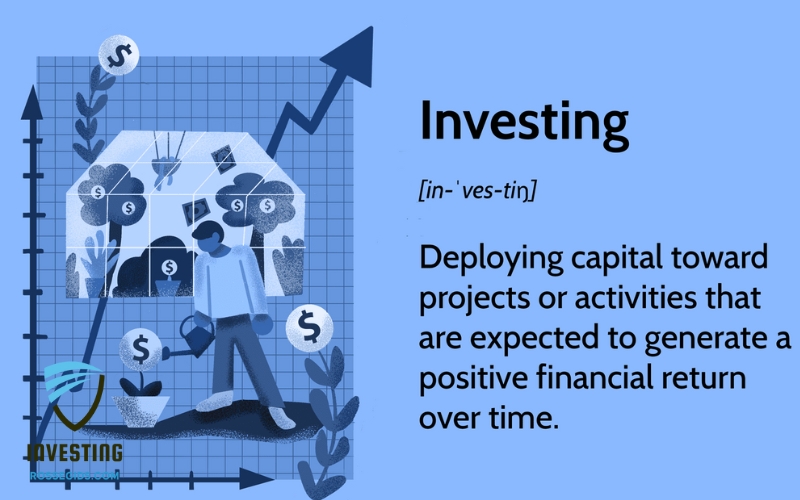Investing is a vast and complex field, but with basic knowledge of investment theory and methods, investors can be more confident in building strategies and making financial decisions. In this article, we will explore basic investment theories and popular methods to help investors achieve their financial goals.
1. BASIC INVESTMENT THEORY
Basic investment theory provides investors with principles and understanding of how financial markets operate, helping them make more accurate decisions. Below are some important theories in investing that investors need to master.

Value Investing Theory: This is a theory made famous by legendary investors such as Warren Buffett. Value theory focuses on finding stocks or assets that are actually worth less than their market price. Investors who follow this theory often look for companies with stable earnings and strong assets that are undervalued by the market due to temporary factors.
Efficient Market Hypothesis (EMH): This theory holds that stock prices already reflect all available information, and therefore, there is no way to consistently beat the market by carefully analyzing financial data. According to this theory, investing in index funds will yield optimal results rather than looking for individual stocks.
Modern Portfolio Theory (MPT): MPT was developed by Harry Markowitz and argues that a diversified portfolio will help reduce risk without reducing returns. This theory proposes that rational asset allocation, i.e., allocation to many different asset classes, will help reduce the overall risk of the portfolio.
Behavioral Finance: This theory studies the influence of psychological and emotional factors on investment decisions. Investors do not always make decisions rationally, and the market is often influenced by factors such as greed, fear, or overconfidence. This theory explains why investors sometimes make wrong decisions despite having enough information.
2. METHODS OF INVESTING
After understanding the basic theories of investing, investors need to know specific methods to invest effectively. Below are some common methods in investing.
Value Investing: This method focuses on buying stocks of companies that are actually worth less than the market price. Value investors look for stocks that are undervalued by the market but have long-term growth potential. This method requires investors to be able to analyze finances, learn about the industry, and identify companies with strong fundamentals.
Growth Investing: Growth investing focuses on investing in companies with high growth rates and strong growth potential in the future. These companies may not have stable profits immediately but have the ability to expand the market, develop new products, or dominate competitive fields. This method is high risk but also brings high profits if the right company is chosen.
Dividend Investing: This investment method focuses on buying stocks of companies that pay stable dividends. Investors following this method often look for companies with stable cash flows and the ability to pay regular dividends. This is a suitable strategy for investors who want to earn passive income from dividends, while protecting their assets from strong market fluctuations.
Fund Investing: Fund investing is an easy and effective way to diversify your portfolio without having to research individual stocks. Funds include mutual funds, ETFs, and index funds, which allow investors to buy small portions of many different assets. Investing in funds helps minimize risk, maximize returns, and provide easy access to investment opportunities that you might not be able to do on your own.
Real Estate Investing: This is a long-term investment method where investors buy and own real estate to rent out or resell after the property value increases. Real estate investing can generate a steady stream of passive income from rental income, and also has the potential to increase the value of the property over time.
3. CHOOSE THE RIGHT INVESTMENT METHOD
Choosing the right investment method depends on your financial goals, risk appetite and investment time horizon. For long-term investors, investing in companies with good values and sustainable growth strategies will be a reasonable choice. If you want a stable passive income, investing in dividend stocks or real estate will be a good choice. Meanwhile, if you want to access diversified investment opportunities with less risk, investing in investment funds will be a safe and effective method.
4. RISK AND RISK MANAGEMENT
Each investment method has its own level of risk. Understanding the risks and how to manage risks is very important to protect assets and optimize profits. Investors need to have risk control strategies, such as diversifying their portfolios, using financial insurance tools, or applying short selling strategies when the market goes down.
CONCLUSION
Basic investment theory and implementation methods are important foundations for investors to build an effective investment strategy and achieve their personal financial goals. Understanding investment theories, applying appropriate implementation methods, and managing risks intelligently will help you be more confident in making investment decisions. Always update your knowledge and be ready to adjust your strategy to cope with market changes and maximize profits from your investments.
